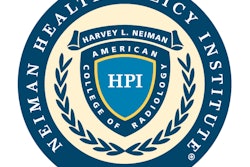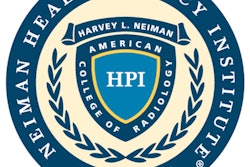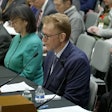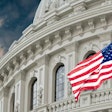
A significant percentage of imaging studies ordered by office-based healthcare providers are self-interpreted rather than referred to radiologists for reading, according to researchers from the Harvey L. Neiman Health Policy Institute (HPI).
An HPI team found that 43.6% of office-based studies were interpreted by the ordering provider, and 58.5% were interpreted within the ordering provider's practice -- results that could have negative ramifications for patient care, according to study coauthor Vijay Rao, MD, of Thomas Jefferson University in Philadelphia. The study was published April 2 in the Journal of the American College of Radiology.
"Our results raise potential implications for quality of patient care," said Vijay Rao, MD, of Thomas Jefferson University in Philadelphia, in an HPI statement. "Nonradiologist specialties, aside from cardiology, lack the rigorous and comprehensive training in imaging interpretation that occurs during the four years of a radiology residency program. Some specialties may provide targeted training in imaging interpretation that is narrow in scope, such as in ultrasound for emergency medicine or obstetrics/gynecology. The large differences between radiologists and nonradiologists in interpretation training could lead to differences in diagnostic accuracy."
First author Eric Christensen, PhD, of HPI and colleagues conducted a study that included data from more than 1.6 million office-based imaging claims for Medicare fee-for-service beneficiaries in 2022 that were ordered by nonradiologists. They found that rates of self-interpretation varied by imaging modality:
| Self-interpretation rate for office-based imaging by modality | |
|---|---|
| Modality | Percentage |
| X-ray and fluoroscopy | 50.4% |
| Ultrasound | 52% |
| Nuclear medicine | 39.5% |
| CT | 5.3% |
| MRI | 6.1% |
By specialty, self-interpretation rates were 19.9% for primary care physicians; 75.7% for orthopedic/sports medicine physicians; and 30.5% for nonphysician practitioners. By practice size, smaller practices (1 to 9 providers) had higher self-interpretation rates (48.9%) compared with larger ones (500 or more providers, 24.2%).
The results raise concerns about "policy considerations regarding self-referral and the in-office ancillary services exception within the Stark Law," according to Rao.
"At present, there is little restriction on imaging interpretation by non-radiologists and concerns of financial conflicts of interest related to self-referral contributed to the passage of the federal Stark law in the 1990s, intended to curb the practice of self-referral," she said. "However, the law's in-office ancillary exception greatly weakens its ability to restrict imaging self-referral. Hence, our results highlight a need to revisit the in-office ancillary exception policy to impact the potential financial incentives that lead to self-referral."
It's possible that, as healthcare consolidation continues, self-interpretation by nonradiologist providers may decrease, Christensen noted.
"Ongoing healthcare consolidation, which is creating larger, multispecialty practices, may serve to reduce imaging self-interpretation by increasing access to a within-practice radiologist," he said. "Such centralization of radiology services may encourage referral of imaging interpretation to the within-practice radiologist in lieu of potential self-interpretation."
The complete study can be found here.



















